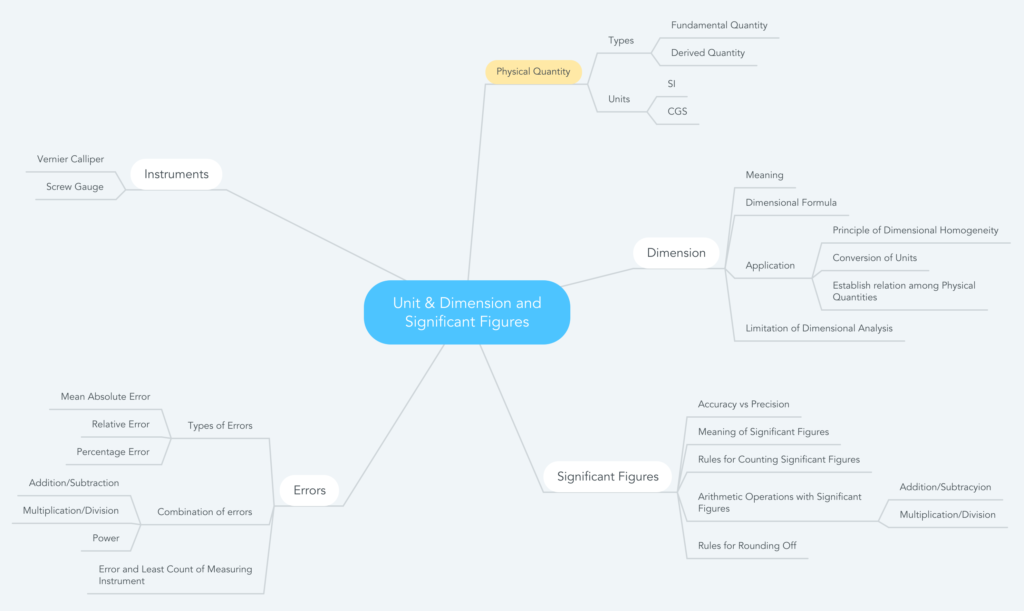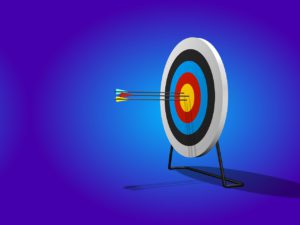Units and dimensions are foundational concepts in physics. They provide a standardized way to express physical quantities and measurements. For JEE Main Physics, a thorough understanding of units and dimensions is crucial as it forms the basis of solving problems across various topics in mechanics, electricity, magnetism, optics, and more. This study material aims to provide a comprehensive overview of units and dimensions, along with relevant examples and practice problems tailored for JEE Main preparation.
Given the format and limitations, I’ll provide a structured content layout for the “Basic Concepts” section that covers the definition of physics, the importance of measurements in Physics, and physical quantities, including a textual description of how images and tables could be integrated.
1. Basic Concepts of Physics
Physics is the branch of science that deals with the study of matter, energy, and the fundamental forces of nature governing the interactions between particles. It aims to describe the fundamental principles of the universe, from the smallest subatomic particles to the vast cosmos.
1.1 Importance of Measurements in Physics
Measurements play a critical role in physics. They are essential for:
- Quantifying Observations: Transforming physical phenomena into measurable quantities allows for a clear understanding of the principles governing those phenomena.
- Establishing Laws: Accurate measurements are crucial for establishing and verifying physical laws.
- Developing New Theories: Measurements can lead to the discovery of new phenomena, guiding the development of new theories or the refinement of existing ones.
Table: Examples of Major Physics Discoveries and the Role of Measurement
| Discovery | Measurement’s Role |
|---|---|
| Speed of Light | Precise measurement led to the development of theories of special relativity. |
| Gravitational Waves | Measurements confirmed predictions of general relativity. |
| Quantum Mechanics | Observing electrons’ behavior required innovative measuring techniques. |
1.2 Physical Quantities
Physical quantities are properties or characteristics of physical systems that can be quantified through measurement. They are typically classified into two categories:
- Fundamental Quantities: These are independent quantities that form the basis of physical measurements. Examples include length, mass, and time.
- Derived Quantities: These are quantities derived from the fundamental quantities through mathematical relationships. Examples include speed (distance/time), acceleration (speed/time), and force (mass x acceleration).
| Fundamental Quantity | Units | Derived Quantity | Formula | Units |
|---|---|---|---|---|
| Length | Meter (m) | Speed | Distance/Time | m/s |
| Mass | Kilogram (kg) | Acceleration | Speed/Time | m/s^2 |
| Time | Second (s) | Force | Mass x Acceleration | Newton (N) |
| Energy | Force x Distance | Joule (J) |

In summary, physics seeks to understand the universe through measurement, relying on both fundamental and derived quantities to quantify and explain the behavior of physical systems. Understanding these basic concepts lays the foundation for exploring the more complex and fascinating aspects of Physics.
2. Systems of Units
In physics, a system of units is chosen to define the set of units used for measuring physical quantities. Over time, several systems have been developed, each serving different disciplines and countries. However, the International System of Units (SI) has been widely adopted for universal consistency.

2.2 Fundamental Units
Fundamental units are the base units upon which all other derived units are based. These do not depend on other units. There are seven fundamental units recognized by the International System of Units (SI).
| Quantity | SI Unit | Symbol |
|---|---|---|
| Length | meter | m |
| Mass | kilogram | kg |
| Time | second | s |
| Electric current | ampere | A |
| Thermodynamic temperature | kelvin | K |
| Amount of substance | mole | mol |
| Luminous intensity | candela | cd |
2.3 Derived Units
Derived units are formed from the fundamental units through mathematical relationships representing physical quantities such as velocity, acceleration, and force. These provide the versatility needed to describe complex phenomena in science and engineering.
| Derived Quantity | Formula | SI Unit | Symbol |
|---|---|---|---|
| Area | Length x Width | square meter | m² |
| Volume | Length x Width x Height | cubic meter | m³ |
| Speed | Distance/Time | meter per second | m/s |
| Force | Mass x Acceleration | newton | N |
| Pressure | Force/Area | pascal | Pa |
| Energy | Force x Distance | joule | J |
2.4 SI Units
The International System of Units (SI) is the most widely used system of measurement globally, adopted for its consistency and ease of communication across disciplines. It is a dynamic system that can adopt new units and redefine existing ones based on advancements in measurement precision.
| Type | Quantity | Unit | Symbol |
|---|---|---|---|
| Fundamental | Length | meter | m |
| Mass | kilogram | kg | |
| Time | second | s | |
| Derived | Pressure | pascal | Pa |
| Energy | joule | J | |
| Power | watt | W |
Understanding different systems of units, especially the SI units, forms a foundational knowledge base in physics, enabling clear communication of scientific ideas and precise measurements across the globe.
JEE Advanced Previous Year Paper
JEE Advanced: 28-Aug-2022 ( Shift 1 )
JEE Advanced: 4-Jun-2023 ( Shift 2 )
Units & Measurement: Dimension & Dimension Analysis
Beat the Physics fear and easily grasp the concept of Units & Measurement with our Expert Teacher Gaurav Prakash ( IIT Delhi, 2007). In this video you will get to learn about Dimension Analysis & its Limitation.
Units & Measurement: Errors in Measurement
Watch the video to find the easiest way to study Errors in Measurement with our Expert Teacher Gaurav Prakash.
Tips for Mastering Measurement and Units:
- Memorize the SI base units and their symbols.
- Practice unit conversions between different systems (SI, CGS, etc.).
- Master the concept of dimensions and their manipulation.
- Understand how to identify and count significant figures.
- Practice solving problems that involve dimensional analysis, unit conversions, and significant figures.
Resources for Further Learning:
- NCERT Physics Textbook (Class 11 & 12)
- JEE Main Physics reference books by reputed authors (e.g., D.C. Pandey, H.C. Verma)
- Online resources and video lectures on Measurement and Units for JEE
By thoroughly understanding these concepts and practicing regularly, you can confidently tackle Measurement and Units problems in JEE Main Physics and build a strong foundation for other chapters.
Crack Admission Into IIT With PracBee’s 1:1 JEE Online Course




